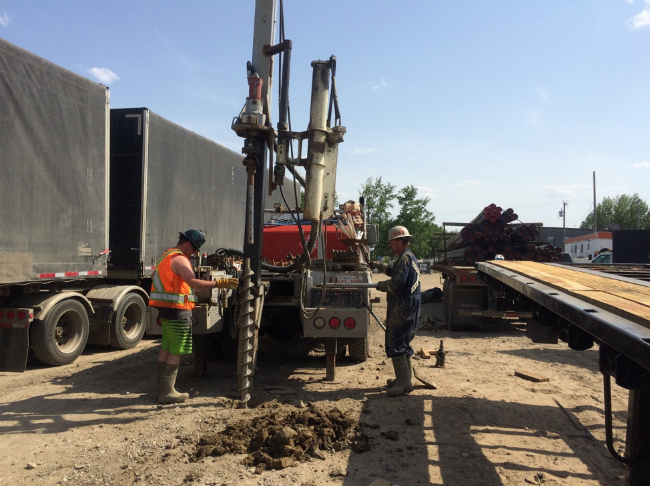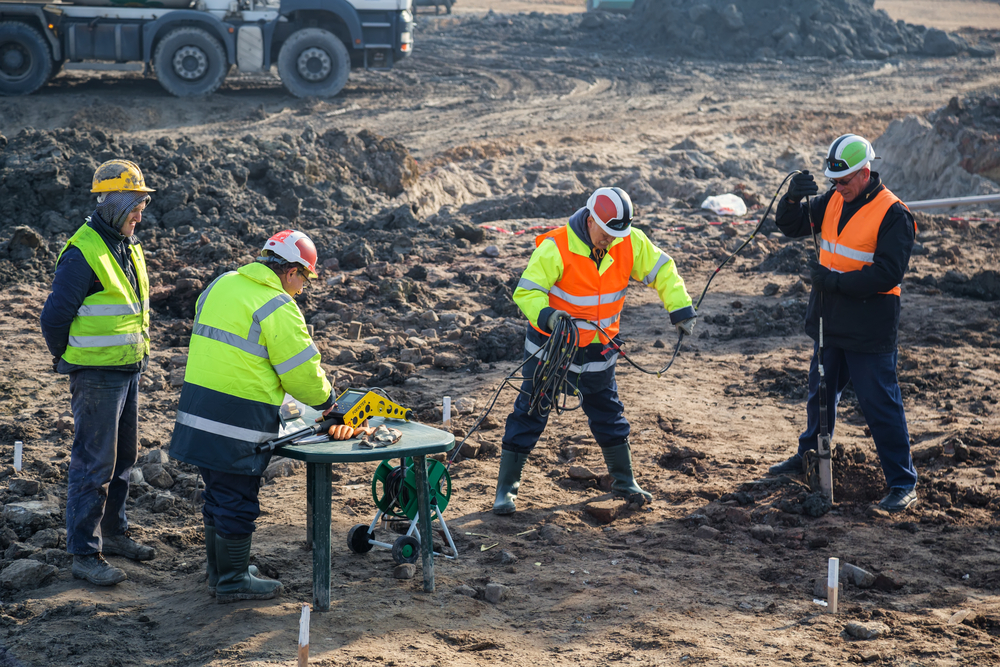A Comprehensive Overview: All About Geotechnical Engineering and Its Applications
A Comprehensive Overview: All About Geotechnical Engineering and Its Applications
Blog Article
A Thorough Summary of Geotechnical Engineering Techniques and Their Influence On Modern Civil Design Projects
Geotechnical design serves as the foundation of modern civil engineering, providing vital techniques that attend to the complexities of subsurface conditions. The interplay of dirt analysis, foundation style, and ingenious technologies forms the stability and sustainability of infrastructure projects. As we explore these methods, it comes to be clear just how essential they are in mitigating potential risks related to construction. Nonetheless, the ramifications of these methods expand past mere security; they likewise influence task performance and environmental considerations, increasing vital questions concerning future developments in the field. What continues to be to be discovered is the transformative capacity of these innovations on urban growth.
Importance of Geotechnical Design
Geotechnical engineering offers as an important foundation for civil engineering projects, influencing the security and security of structures. This self-control concentrates on the behavior of soil and rock products, providing necessary insights that direct the design and building procedures. By recognizing the interaction in between the planet and crafted structures, geotechnical engineers can assess risks associated with ground conditions, such as settlement, incline security, and liquefaction.
The relevance of geotechnical design extends beyond plain structural stability; it plays a crucial role in environmental defense and sustainability. Effectively executed geotechnical evaluations make certain that tasks reduce their ecological footprint and comply with regulative requirements (geotechnical engineer description). Geotechnical design is critical in website choice, making it possible for designers to determine suitable locations for building and construction that alleviate prospective dangers.
Furthermore, geotechnical engineering fosters technology in civil design by progressing methods for ground enhancement, structure layout, and excavation. The technique's contributions are essential in addressing challenges presented by differing soil conditions, therefore promoting efficient and safe facilities development. Generally, the value of geotechnical design is critical in ensuring that civil design jobs are not just possible but likewise durable versus manufactured and all-natural misfortunes.
Secret Strategies in Geotechnical Design

An additional crucial technique is soil stabilization, which involves customizing dirt homes to boost load-bearing ability or minimize negotiation. Approaches such as including cement, lime, or using geosynthetics are generally used to attain soil renovation.
Ground renovation methods, including vibrant compaction and vibro-replacement, are likewise essential. These techniques intend to densify loose or soft soils, enhancing their toughness and decreasing liquefaction capacity in seismic areas.
Keeping structures, such as sheet piles and soil nailing, are employed to support excavations and stop dirt activity. Furthermore, slope stabilization strategies, including drain systems and preserving walls, are crucial for reducing landslide threats.

Soil Analysis and Checking Methods
Reliable soil evaluation and screening approaches are crucial for comprehending the physical and chemical homes of soil, which directly influence design decisions. A thorough evaluation of dirt features is crucial for predicting actions under numerous loading problems and environmental impacts.
Usual dirt screening approaches include both field and laboratory techniques. Field tests, such as the Standard Penetration Examination (SPT) and Cone Infiltration Test (CPT), provide prompt understandings right into dirt stamina, stratification, and thickness. These examinations assist designers analyze site problems effectively prior to even more substantial lab analyses.
Laboratory testing techniques, such as Atterberg limitations, grain dimension distribution, and compaction examinations, are important for identifying dirt plasticity, wetness content, and optimal compaction levels. Additionally, progressed strategies like triaxial examinations and combined undrained (CU) tests offer visit our website valuable information on shear stamina and effective anxiety parameters - geotechnical specialist.
Chemical testing, consisting of pH, electric conductivity, and organic material evaluation, is also crucial for recognizing prospective soil contamination and its impact on construction products. Jointly, these soil analysis and testing techniques develop the foundation of informed decision-making in geotechnical design, making certain the safety and stability of modern-day civil design projects.
Foundation Design Approaches
Structure design methods are crucial in guaranteeing the stability and longevity of frameworks. These strategies can be categorized into superficial and deep structures, each suited to particular soil problems and filling situations. Superficial foundations, such as spread grounds and mat foundations, are normally made use of when surface dirts have adequate bearing ability. They distribute the tons over a larger location, reducing settlement threats.
In contrast, deep foundations, including stacks and pierced shafts, are used when surface area soils are weak or insufficient for sustaining the framework. These structures transfer tons to much deeper, extra stable soil or rock layers, making them necessary for skyscrapers and bridges in tough geotechnical conditions.
Choosing the proper foundation style entails extensive geotechnical investigations, including soil composition, bearing ability, and groundwater conditions. Additionally, engineers have to consider elements such as settlement, lateral lots, and prospective seismic activity to guarantee the structure's performance in time.
Ultimately, a well-executed structure style is a critical element of civil engineering, directly affecting the safety, sturdiness, and functionality of frameworks. geotechnical specialist. By lining up foundation kinds with site-specific conditions, designers can efficiently minimize dangers related Get the facts to structure failure
Advancements Shaping Civil Engineering

Lasting products, such as high-performance concrete and recycled aggregates, are likewise acquiring traction, promoting eco-friendly techniques while maintaining architectural integrity. In addition, progressed geotechnical strategies, such as ground renovation and deep mixing techniques, are enhancing the stability of structures in challenging dirt problems.
Furthermore, making use of drones and remote noticing technology is improving website surveying and monitoring, giving real-time data that help in handling construction progression and safety. The application of innovative her latest blog building approaches, such as prefabricated and modular building and construction, better expedites project timelines and decreases waste. Collectively, these technologies are not only changing civil design techniques yet also making certain that contemporary infrastructure fulfills the needs of a growing worldwide population while resolving ecological concerns.
Conclusion
In final thought, geotechnical engineering strategies are integral to the success of contemporary civil design projects. By utilizing these strategies, designers can reduce dangers and contribute to the advancement of resilient city settings, ultimately fostering sustainable growth and safety in civil design practices.
Geotechnical design serves as the backbone of modern-day civil engineering, offering necessary methods that deal with the complexities of subsurface conditions.Geotechnical design serves as a crucial foundation for civil engineering projects, influencing the safety and security and security of structures.In addition, geotechnical design cultivates technology in civil engineering by progressing strategies for ground enhancement, structure layout, and excavation. In general, the relevance of geotechnical engineering is paramount in making sure that civil design projects are not just possible however likewise resistant against all-natural and manufactured adversities.
In conclusion, geotechnical design methods are indispensable to the success of modern-day civil design projects.
Report this page